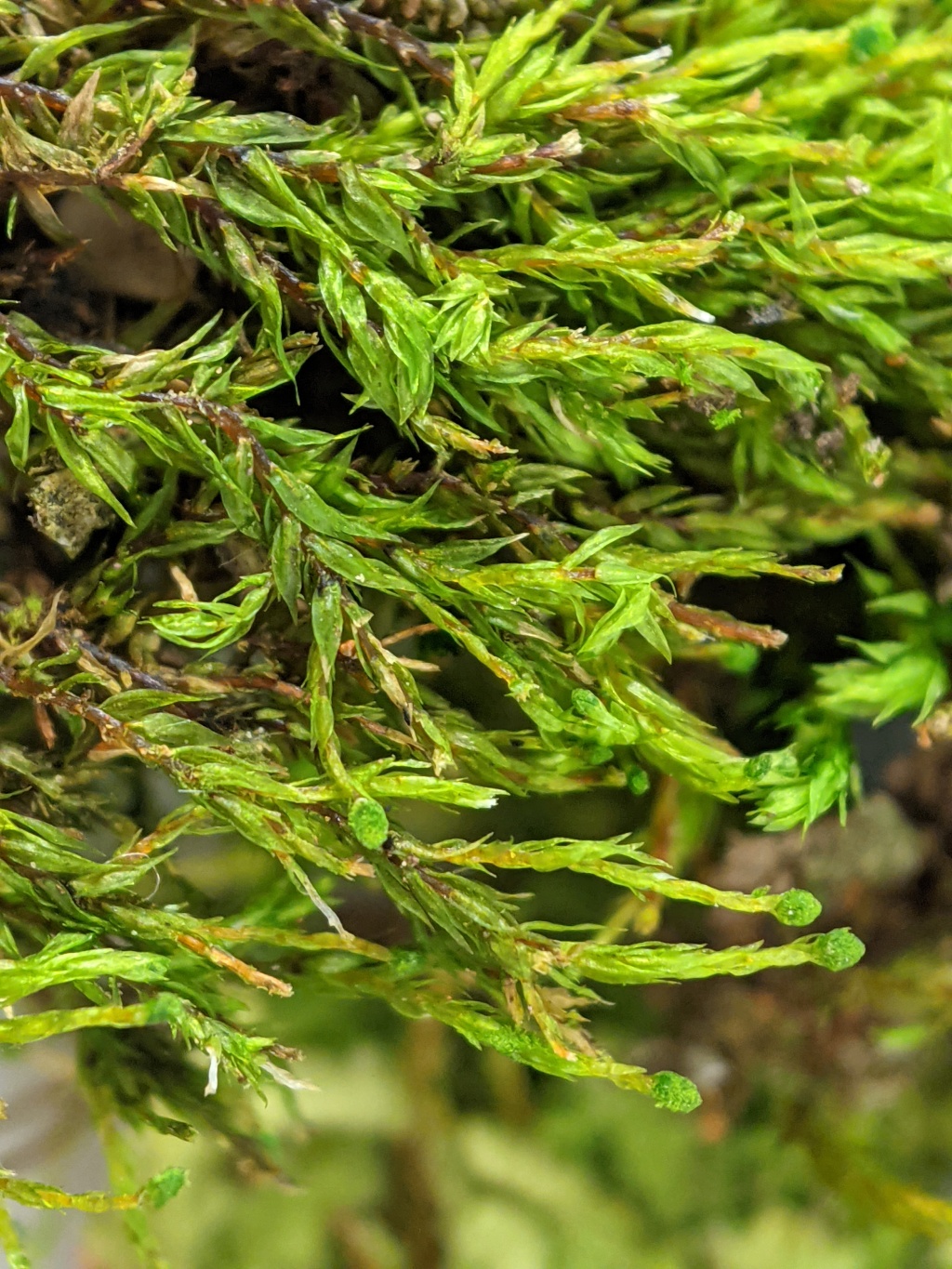Tetraphidopsis
Dioicous. Asexual reproduction by filamentous clavate gemmae aggregated in a conspicuous globose cluster at the end of stems and sometimes also in upper leaf axils. In tufts of 2–4 stems on branches and twigs. Primary stem short, blackish, deteriorating. Secondary stem erect, simple or sparingly and irregularly branched, orange to red-brown, with occasional red-brown rhizoids near base, arising from a dense cluster of rhizoids or sometimes at branch bases; paraphyllia absent; pseudoparaphyllia filiform to narrowly foliose; central strand absent. Leaves narrowly ovate-lanceolate, arranged around stem and facing all directions, wide-spreading when moist, erect to erect-spreading when dry, narrowly decurrent; apex acuminate, or becoming obtuse toward gemmiferous apices, slightly twisted, without a hairpoint; costa single, extending to 1/3 of leaf length; margin entire, plane or recurved at base; laminal cells elongate-rhombic, becoming quadrate to rectangular at base, smooth; alar cells strongly differentiated, quadrate, yellowish-brown, orange or reddish. Capsule erect, symmetric, ellipsoid to cylindric, exserted, longitudinally 8-ribbed, with an annulus. Calyptra cucullate. Operculum oblique-rostrate. Peristome double; exostome teeth with basal portion strongly curved outwards and apical portion strongly curved inwards when dry; endostome equal to 2/3 height of exostome teeth, without a basal membrane; cilia absent.
One species in New Zealand, Tasmania and Victoria.
 Spinning
Spinning

